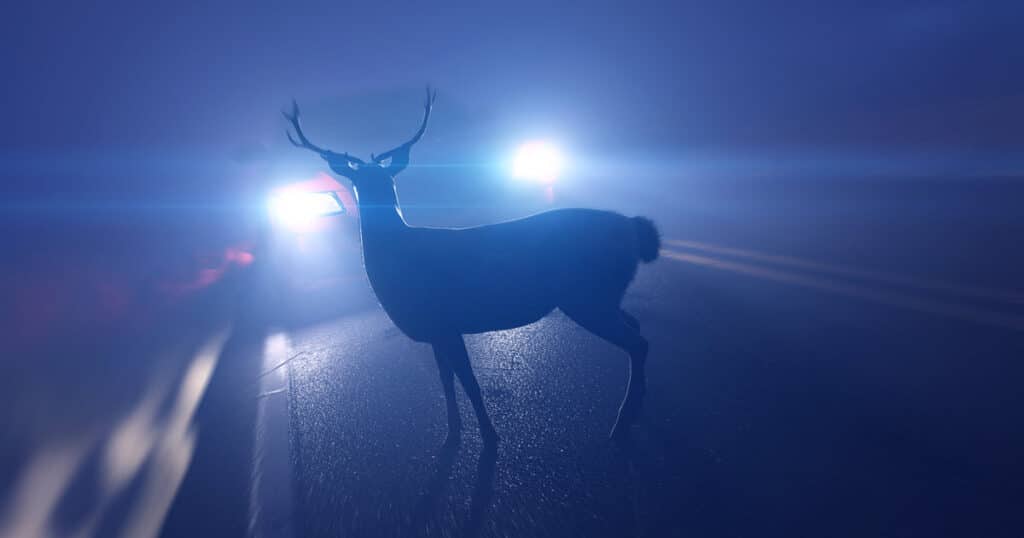Pretty much everyone has heard the expression “deer in headlights, “deer in the headlights,” or “deer caught in the headlights.” But what if you haven’t heard this phrase, or are wondering about the meaning of deer in headlights after hearing someone use the phrase?
Deer in headlights means that someone looks surprised and unable to react. It is a turn of phrase used to liken someone looking stunned or surprised to how a deer looks when frozen by the headlights of an oncoming car.
But why do deer freeze when they look in headlights? Why don’t they run for safety? Let’s learn about that and some related questions in this article.
Why Do Deer Freeze in the Headlights of an Oncoming Car?
To understand why deer freeze in a car’s headlights, you need to know about their vision. Deer are crepuscular, which means they see best and are most active in low light and in the dark.
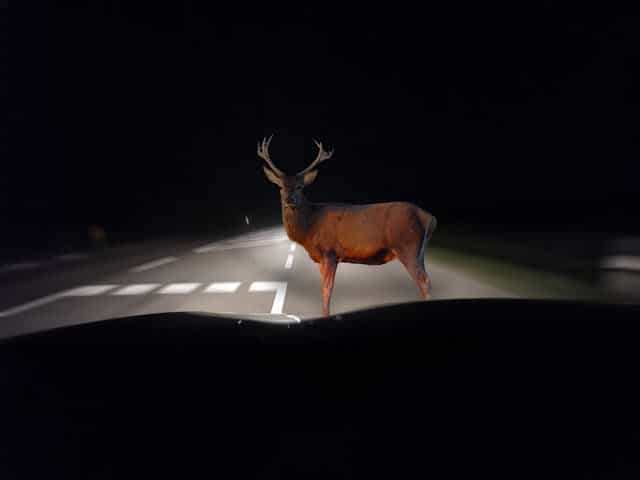
Deer’s eyes include excellent night vision, and their high proportion of rods mean that they’re extremely light sensitive.
When deer are active in the dark, their pupils are completely dilated. This is important, as it means the eyes can bring in the maximum amount of light.
This is why deer are blinded by car headlights. It takes as long as a couple of minutes for it to become accustomed to the bright light and able to see. The deer doesn’t move because it is alarmed, disoriented, and not sure whether it is safe to run out of the way.
What Does a Deer in Headlights Mean?
We might say someone looks like a deer in headlights if they appear extremely surprised and confused. Another context in which you might use this expression is if somebody is having severe anxiety or stage fright.
For instance, a novice speaker may be about to deliver a speech when he or she freezes, staring at the audience, like a deer in headlights.
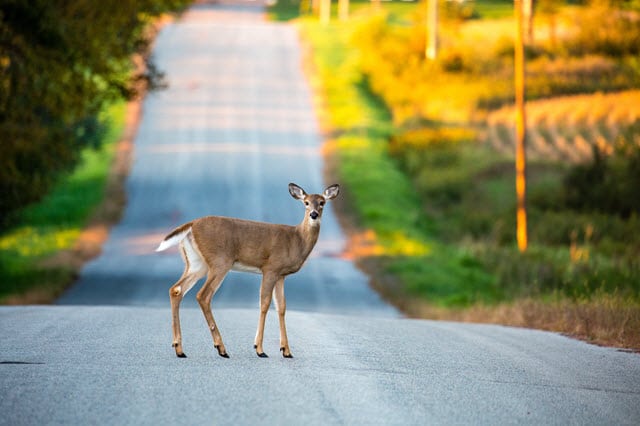
If you’re in the United Kingdom, you’ve probably heard the expression, a rabbit in headlights. That is the British version of the deer in headlights idiom. Like deer, rabbits tend to freeze when a car’s headlights appear.
List of Deer in Headlights Synonyms
There are several synonyms for the deer in headlights expression. Let’s take a look at some of them below:
- Mind-blown or mindblown
- Awestruck or awe-struck
- Confused
- Stunned
Where Did the Phrase Deer in the Headlights Come From?
For obvious reasons, the idiom deer in headlights was only invented after modern automobiles were invented. In fact, it took until the 1980s for deer in the headlights to become a common idiom.
At first, drivers were confused why deer never moved out of the way when they saw a car coming at night. Why would deer just stand there, watching danger quickly approach and not run from the road?
The first time the idiom deer in the headlights became widely used in the United States was in 1988. It was used in the presidential contest between George H.W. Bush and Michael Dukakis.
Dan Quayle was George H.W. Bush’s running mate. Many people assumed Quayle was incompetent and easily confused, and a newspaper article accused him of looking like “a deer in the headlights” during a debate.
Why Do Deer Run into the Road?
If you ever travel in wooded areas with deer populations, there’s a chance one of these animals will suddenly appear in front of your car in the dark. Be prepared and understand that the deer isn’t going to move, stopping safely as quickly as you can.
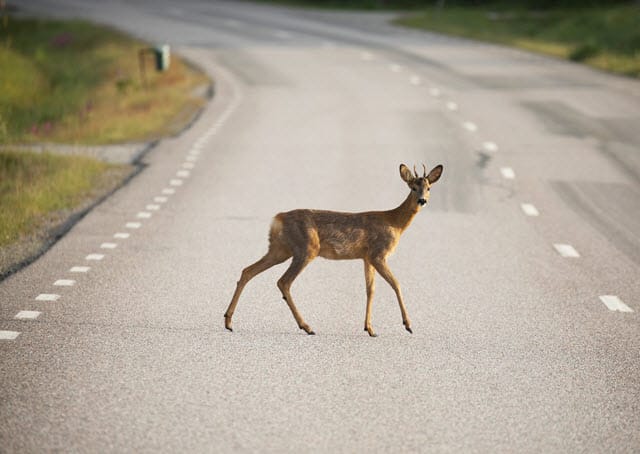
Deer may run across the road to stay with its companions. If you see one deer crossing the road, there’s a strong chance that others will follow, so keep this in mind.
Deer are especially likely to suddenly run into the road during mating season. Bucks are always in pursuit of fawns during the rut.
If the male deer thinks receptive female deer are to be found on the other side of a road, they’ll run across without hesitation.
Deer also cross roads to reach water and food sources. If food and water are in short supply, deer are more likely to suddenly run into the road to find what they can on the other side.
The deer may take a couple of minutes to move, so be patient. As touched on earlier, deer will generally refuse to move until it can see and it will take a couple of minutes for the animal’s eyes to adjust.
As cautious animals, deer won’t move if they don’t know what is happening. They will generally freeze until they can see and ascertain their surroundings.
What Happens if You Hit a Deer?
Hitting a deer with your car isn’t just dangerous for the animal. It could end up in severe injury or even death for you as the driver. This is because of a deer’s size.
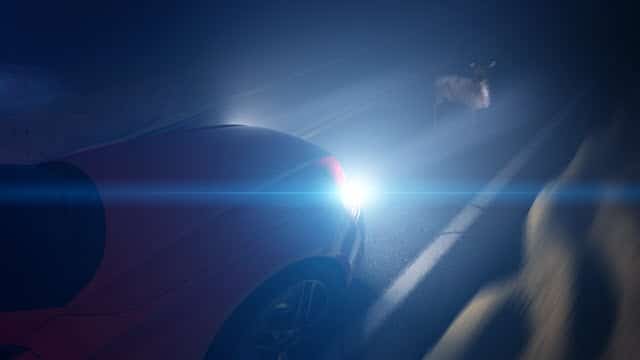
If you hit a deer, the first thing you should do is get your car to the safest spot possible. For example, pull over and activate your hazard lights.
Immediately call 911 for help, letting authorities know about the collision and your injuries. Never attempt to approach the deer. The animal will be extremely frightened and might attack.
How to Avoid Hitting a Deer
The spring and fall have the highest number of collisions involving deer. There are around 1.6 million collisions between vehicles and deer every year in the United States.
On average, 200 people die in these crashes. Injuries are extremely common, and they’re often serious. On top of all that is the vehicle damage, which amounts to at least $3.6 billion each year all over the country.
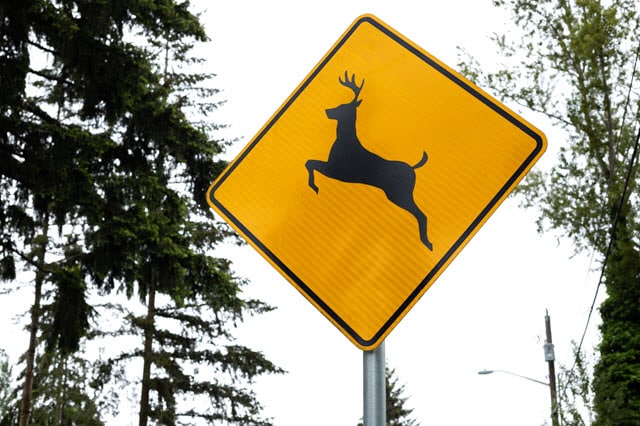
Always limit your speed as much as possible when driving in areas where they may be deer, especially if it’s near dusk or dawn or at night.
A lower speed makes you better able to stop suddenly if necessary. Also, if you do have a collision with a deer, it will cut down on the severity of impact.
Be a defensive driver and stay alert at all times. Stay aware of everything around you, and be especially careful if you notice any wildlife near the road. For example, you may see deer eyes shining.

